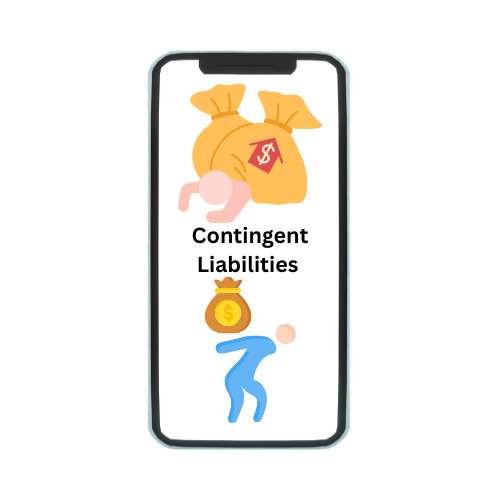Debt is a common financial burden that many people face at some point in their lives. However, not all debt remains collectible forever. Time-barred debt, also known as statute-barred debt, refers to debts that have surpassed the statute of limitations for legal collection through the court system. This means that while the debt still exists, creditors or debt collectors can no longer sue the debtor to recover the money owed. Understanding time barred debt is essential for consumers, as it impacts their legal rights and obligations regarding repayment. This article explores what time-barred debt entails, how it works, and what individuals should know if they find themselves dealing with such debts.
What Is Time Barred Debt?
Time barred debt refers to debts that have exceeded the statute of limitations for legal collection through the court system. The statute of limitations varies by state and type of debt but typically ranges from 3 to 10 years. Once a debt becomes time-barred, creditors or debt collectors can no longer sue the debtor to enforce repayment. However, it’s important to note that the debt still exists, and creditors can still attempt to collect it through other means, such as contacting the debtor by phone or mail. It’s crucial for consumers to be aware of their rights and responsibilities regarding time-barred debt, as making a payment or acknowledging the debt can potentially restart the statute of limitations. Understanding the implications of time-barred debt can help individuals make informed decisions about how to manage their finances and deal with debt collectors.
How Does Time-Barred Debt Work?
Time-barred debt works based on the statute of limitations, which is the time period during which creditors or debt collectors can legally sue debtors for repayment of a debt. Once a debt surpasses this time period, it becomes time-barred. This means that creditors can no longer use the court system to force repayment through lawsuits or judgments. However, the debt itself still exists, and creditors can still attempt to collect it through non-legal means, such as contacting the debtor via phone calls or letters. It’s important for debtors to be cautious when dealing with time-barred debt because certain actions, such as making a partial payment or acknowledging the debt, can potentially restart the statute of limitations, giving creditors a new opportunity to sue for repayment. Understanding how time-barred debt works is crucial for managing financial obligations and protecting oneself from unfair debt collection practices.
What Are the Types of Debt?
Debt can be categorized into several types, each with its own characteristics and implications for borrowers:
- Secured Debt: This type of debt is backed by collateral, which serves as security for the lender in case the borrower defaults. Common examples include mortgages and auto loans. If the borrower fails to make payments, the lender can repossess or foreclose on the collateral.
- Unsecured Debt: Unlike secured debt, unsecured debt is not backed by collateral. Credit cards, medical bills, and personal loans are examples of unsecured debt. Since there is no collateral, lenders rely on the borrower’s creditworthiness and ability to repay.
- Priority Debt: This category includes debts that are given priority in repayment over other debts. Examples include child support, alimony, and certain taxes. Priority debts must typically be paid before other debts in the event of bankruptcy or insolvency.
- Time-Barred Debt: Time-barred debt refers to debts that have exceeded the statute of limitations for legal collection through the court system. Creditors can no longer sue to enforce repayment, but the debt still exists, and creditors can attempt to collect it through other means.
What Are Examples of Time-Barred Debt?
Examples of time-barred debt include various types of financial obligations that have surpassed the statute of limitations for legal collection through the court system. Common examples include:
- Old Credit Card Debt: Credit card debt that has gone unpaid for a number of years and is now beyond the statute of limitations.
- Personal Loans: Loans from financial institutions or private lenders that have become unenforceable due to the passage of time.
- Medical Bills: Unpaid medical expenses that are no longer legally collectible because they have exceeded the statute of limitations.
- Utility Bills: Unpaid bills for services like electricity, water, or phone services that have lapsed beyond the statute of limitations.
- Retail Store Cards: Unpaid balances on store-specific credit cards or lines of credit that are now time-barred.
How Do I Know If My Debt Is Time-Barred?
To determine if your debt is time-barred, you need to check the statute of limitations (SOL) that applies to your specific type of debt and your state’s laws. Here’s how you can find out if your debt is time-barred:
- Identify the Type of Debt: Different types of debt have different statute of limitations periods. For example, credit card debt, personal loans, medical bills, and utility bills may each have different time limits.
- Check Your State’s Laws: The statute of limitations varies by state. It typically ranges from 3 to 10 years, but it can be longer or shorter depending on where you live. You can find this information by searching online or contacting your state’s Attorney General’s office.
- Determine the Date of Last Activity: The clock for the statute of limitations usually starts ticking from the date of your last payment or activity on the debt. This is known as the “date of last activity” (DLA).
- Calculate the Time Since Last Activity: Once you know the statute of limitations and the date of last activity, calculate how much time has passed. If the time exceeds the statute of limitations for your type of debt in your state, then your debt is likely time-barred.
- Verify with Documentation: Review your records, including any communication from debt collectors, to confirm when your last payment or activity on the debt occurred. Sometimes, debt collectors may try to collect on debts that are time-barred, so it’s important to have accurate records.
What Should I Do With Time-Barred Debt?
When dealing with time-barred debt, it’s important to proceed carefully to protect your rights and financial well-being:
- Understand Your Rights: First, understand that you cannot be sued for time-barred debt. The statute of limitations has expired, so creditors or debt collectors cannot legally enforce repayment through the court system.
- Avoid Restarting the Statute of Limitations: Be cautious about how you handle time-barred debt. Making a payment, acknowledging the debt, or entering into a new payment plan can restart the statute of limitations. This gives creditors a new opportunity to sue you for the debt.
- Check Your Credit Report: Time-barred debt can still appear on your credit report, but it should be noted as time-barred and uncollectible. Review your credit report to ensure that it is accurately reported.
- Respond to Collection Attempts Wisely: If contacted by debt collectors regarding time-barred debt, respond carefully. Avoid making any promises to pay and consider sending a cease and desist letter to stop further communication.
- Seek Legal Advice if Necessary: If you’re unsure how to handle time-barred debt or if you’re facing aggressive collection tactics, consider consulting with a consumer rights attorney. They can provide guidance based on your specific situation and state laws.
- Focus on Current Financial Responsibilities: Concentrate on managing your current financial obligations and improving your financial health. Prioritize paying current debts and maintaining a positive credit history.
Conclusion
In conclusion, understanding time-barred debt is crucial for managing your financial obligations and protecting your rights as a consumer. Time-barred debt refers to debts that have surpassed the statute of limitations for legal collection through the court system. While you still owe the debt morally, creditors cannot sue you to enforce repayment once the statute of limitations has expired. It’s important to be aware of the statute of limitations for your specific type of debt and your state’s laws to avoid inadvertently restarting the clock on the debt. Reviewing your credit report regularly can help ensure that time-barred debts are accurately reported as uncollectible. If you’re contacted by debt collectors regarding time-barred debt, respond carefully and consider seeking legal advice if necessary. By managing your financial responsibilities wisely and understanding your rights, you can navigate time-barred debt and maintain your financial health effectively.
Frequently Asked Questions(FAQs)
The time it takes for a debt to become time-barred varies by state and type of debt, typically ranging from 3 to 10 years.
While a creditor cannot sue you for repayment of a time-barred debt, they can still attempt to collect it through other means, such as contacting you by mail or phone.
Yes, time-barred debt can still appear on your credit report, but it should be marked as time-barred and not legally enforceable.






